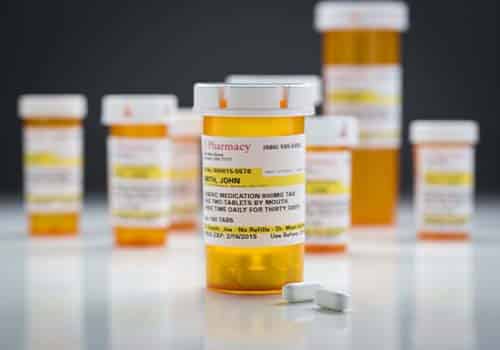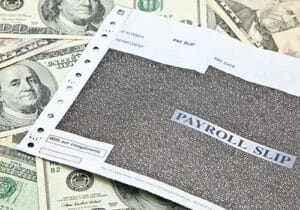Prescription drugs are expensive, and many people struggle to find ways to pay for their medications. Since these medications are medically necessary, some people go without other basic necessities to pay for them. If enrolled in Medicare, you might qualify for the Extra Help program to get financial assistance related to your prescription drug coverage.
The Medicare Extra Help program can help pay your monthly premiums, deductibles, and copays related to your Medicare drug plan. This program is limited to those with a financial need for this assistance program.
If you need help paying for your prescription drug coverage through Medicare, keep reading. We will tell you what the Extra Help program is, what it covers, how to qualify, and how you can apply for these benefits.
What Is Medicare Extra Help & What Does It Cover?
Medicare Extra Help is a Medicare program that helps eligible individuals pay for costs associated with their Medicare Part D prescription drug plan. Help may include financial assistance with monthly premiums, deductibles, and copays.
In addition, the cost of medications for Extra Help beneficiaries is reduced as long as the medication is on the plan’s formulary and the beneficiary uses a network pharmacy. You might also hear about the Extra Help program called the Part D Low-Income Subsidy program.
Prescription Drug Assistance
Extra Help is a federal program administered by the Social Security Administration. This Medicare prescription drug coverage assistance is estimated to be worth about $5,500 per year to its beneficiaries. This program is a lifesaver for some participants as they would not otherwise be able to afford their prescription drug costs.
Benefits of Extra Help
As mentioned, Extra Help covers Part D premiums, deductibles, and copays for Medicare beneficiaries enrolled in the program. Extra Help also reduces your coinsurance amounts for medications and prevents you from paying any late enrollment penalties associated with Part D coverage.
Beneficiaries who qualify for Extra Help are entitled to a nine-month special enrollment period each year from January through September. You may be entitled to full Extra Help benefits or only partial Extra Help benefits based on your situation. We will discuss the eligibility criteria in more detail in the next section.
KEY TAKEAWAYS
- The Medicare Extra Help program can help pay your monthly premiums, deductibles, and copays related to your Medicare drug plan.
- Those on full Medicaid coverage, enrolled in Medicare Savings Programs, and those on SSI are automatically eligible for Medicare Extra Help.
- Enrollees must meet strict resource and income limits to qualify for the Extra Help program. Annual Income must be below $22,590 for individuals and $30,660 for someone married.
Extra Help Income Limits & Eligibility Requirements
So, who qualifies for Extra Help? Some people are automatically enrolled in the Extra Help program, while others must apply manually. No additional requirements must be met for those who are automatically enrolled.
- Automatic enrollees include those on full Medicaid coverage, those enrolled in a Medicare Savings Program (assistance with Medicare Part B premiums from a state program), and Social Security SSI (Supplemental Security Income) recipients.
If you meet any of those criteria, then the income limits associated explicitly with the Extra Help program do not apply.
Income Limits
If you need to enroll manually, the Extra Help program is also available for low-income individuals not enrolled in one of the other programs mentioned above. In 2024, individuals usually need an annual income of less than $22,590 and less than $17,220 in resources. The limits for married couples are $30,660 and $34,360, respectively.
Remember that not everything you own counts toward your resource limit. Typically, stocks, bonds, and money in a savings or checking account will count toward the limit. However, your home, one car, a burial plot, furniture, household items, some life insurance policies, and up to $1,500 in burial expenses will not count toward the limit.
Must read articles related to Medicare
- How do you get a Medicare Flex card for seniors?
- The four types of Medicare savings programs.
- What do I do if I need a Medicare card replacement?
- Deep dive into the Qualified Medicare Beneficiaries program.
- Overview of what is covered under Medicare.
How To Apply For The Extra Help Program
If you have a limited income and think you might qualify for Extra Help, you must know how to apply for these benefits. First, remember that many plan participants are automatically enrolled in the program. If you are automatically enrolled, you should receive a letter with your new drug plan details. The letter should outline how much you will pay for your coverage.
Online
For those who need to apply for the program, you should complete the Extra Help application online. Be aware that you must live in one of the 50 United States or the District of Columbia. You might also be required to provide documentation of your financial need, including bank statements, tax returns, etc.
Over the Phone
If you cannot complete your application online, call 1-800-Medicare or the Social Security Administration (SSA) toll-free at 1-800-772-1213 to start the application process. TTY users can call 1-800-325-0778.
You can visit Medicare.gov to learn more about the application process. You can also visit your local Social Security office to start your application.
If you are approved, you will receive a letter detailing your benefits. For those not already enrolled in a qualified Part D plan, you will be automatically enrolled in a Part D drug plan. The level of Extra Help that you receive will depend on your income.
TIP
Extra Help enrollees will be automatically enrolled in a prescription plan if they do not already have drug coverage. However, you can change the plan during your annual nine-month special enrollment period.
Choosing The Right Prescription Drug Plan With Medicare Extra Help
Some people already have prescription drug coverage before enrolling in Extra Help. Suppose you are already enrolled in a plan through your employer or receive retiree coverage through a union or previous employer. In that case, you should check with your plan before enrolling in Extra Help. Enrollment in Extra Help might cause you to lose your existing coverage, and your current medical insurance coverage might be a better fit for your needs.
If you are enrolled in Medicaid, contact your state Medicaid office to ensure you fully understand how Extra Help will affect your coverage. You should weigh the details and cost of your current plan against the benefits provided by Extra Help.
Automatic Enrollment
You will be automatically enrolled in a qualifying Medicare prescription drug plan if you do not have prescription drug coverage. You will receive a letter in the mail that outlines your coverage details and costs.
- Just because you are enrolled in a plan automatically does not mean you can never change your coverage.
Social Security Extra Help beneficiaries receive a nine-month special enrollment period each year, during which they can change their Part D plan without penalty.
Medicare Advantage Coverage
You might decide to enroll in a Medicare Advantage plan that includes Medicare Part A, Part B, and Part D. However, you should verify that the plan will be eligible for Extra Help before enrolling.
Whatever plan you choose should fit your current needs. When deciding, you should closely examine each plan’s total estimated out-of-pocket cost. Remember, those monthly premiums are not the only Medicare costs associated with a plan. It would help if you also considered deductibles, copays, and coinsurance amounts when deciding on the right strategy to fit your needs.
Medicare Savings Programs
If you already participate in a Medicare Savings program, you will be automatically enrolled in Medicare Extra Help. There are four types of Medicare Savings programs, each of which is meant to help low-income individuals with their Medicare expenses.
The four types are the Qualified Medicare Beneficiary (QMB) program, the Specified Low-Income Medicare Beneficiary (SLMB) program, the Qualifying Individual (QI) program, and the Qualified Disabled Working Individual (QDWI) program. The eligibility requirements for each program are slightly different, but the goal of each program is roughly the same.
Each state administers Medicare Savings programs. You apply through your state program, and your state determines the income requirements and eligibility criteria for each. You should know that most programs’ income limits are slightly higher in Alaska and Hawaii. These programs help pay for your Medicare Part A and Part B premiums. In addition, they might also pay for deductibles, copays, and coinsurance amounts.
The Bottom Line
Medicare Extra Help provides prescription drug plan cost assistance to enrollees. To qualify for the program, you must meet the income requirements or participate in another low-income program, like a Medicare Savings Program.
Extra Help covers your Part D premium, and it can also pay for copays and deductibles. In addition, it lowers the cost of generic and brand-name drugs at network pharmacies. Depending on your income level, you can qualify for full Extra Help or partial Extra Help.
Frequently Asked Questions
An individual can generally make no more than $22,590 and still get Extra Help. For a married couple, that number rises to $30,660.
In addition to the income limits, you must also have limited resources to qualify for Extra Help. Stocks, bonds, cash in the bank, and some other accounts count toward your resources.
An individual must have less than $17,220 in resources, and a married couple must have less than $34,360 in resources.
Yes, Medicare Extra Help is free for those who qualify. Not only is the program free, but it saves you money. It helps pay for at least a portion of your Medicare Part D monthly premium, and it also covers some copays and deductibles.
Finally, it lowers your out-of-pocket costs for prescription drugs at network pharmacies. Since Extra Help is designed to help low-income individuals, there is no cost associated with the program.
No, Extra Help does not cover your Part B premiums. Extra Help only provides assistance with costs related to your Part D drug plan. If you need help with your Part B premium, you should attempt to qualify for a Medicare Savings Program.
These programs help with Part A and Part B premiums as well as copays, deductibles, and coinsurance amounts. These savings programs are administered at the state level, so you should contact your state office to see if you qualify.
Medicare Advantage plans, or Medicare Part C, combine traditional Medicare coverage into a single plan. Private insurance companies administer Advantage plans, and these plans can include Part A, Part B, and Part D coverage.
On the other hand, Extra Help is a financial assistance program designed to help low-income individuals with costs related to their Part D plans. Extra Help is not a type of coverage; instead, it is a federal assistance program that helps cover the cost of part of your Medicare coverage.
You can find a Social Security Administration office near you by using our SSA office locator and searching for your closest location.







